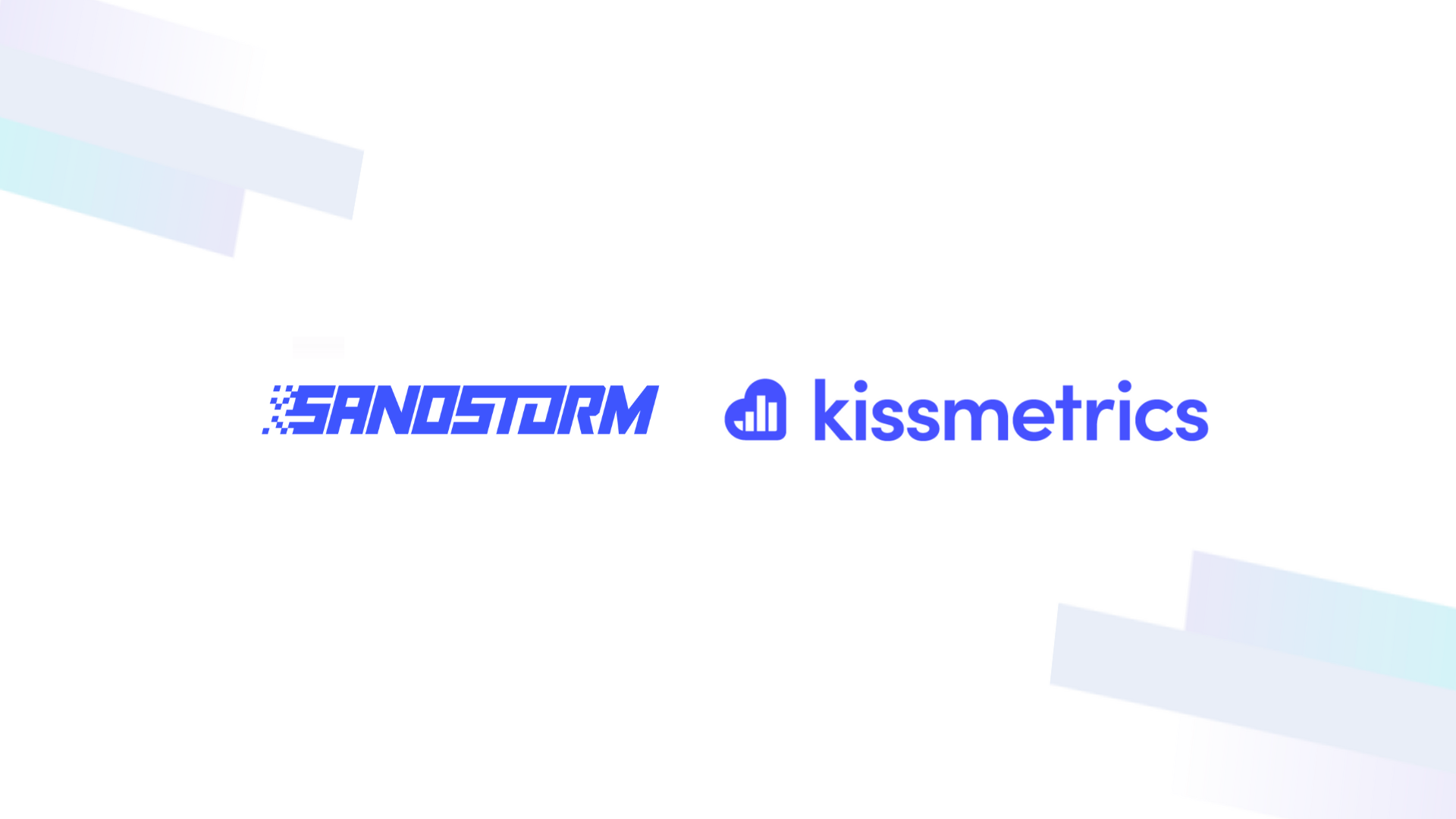Which Product Metrics & KPIs Matter?

Product metrics and KPIs are great tools for companies to track success in the key areas that matter to their business. There are many different examples of KPIs and product metrics and, when used properly, they can provide great insight into your company’s health.
What is a Product Metric?
A product metric is a measurable data point on the performance of a product. It should be quantifiable, meaning it can be measured as a numerical value or quantity, and it should capture how a user interacts with a product. Once analyzed, product metrics will tell you how beneficial those interactions were to the user and the company. Various teams in your company can use a good product metric to gain more insight into what’s successful about your product and what isn’t.
What is a Key Performance Indicator (KPI)?
A key performance indicator, or KPI, is a progress measurement towards a goal or achievement. A KPI should be quantifiable and should have a clear endpoint that can be reached.
By tracking objectives over time, a KPI can give you a good indication of your progress and how close you are to completing a goal. A key performance indicator can be created for a specific product, department, or individual employee.
Unlike product metrics, KPIs are not limited to products alone, as they are applied as a measure of progress in achieving a specific target.
Are KPIs and Performance Metrics the Same Thing?
KPIs and performance metrics are similar in that they are quantitative and should show measured value over time. Both performance metrics and KPIs should give you a clear picture of progress in meeting the goals your organization has set. But while KPIs and performance metrics share some similarities, there are key differences between the two measures.
KPIs measure the progress towards a goal or a checkpoint, a performance metric simply measures the performance of a metric over a period of time. Therefore, a performance metric could be considered part of a KPI, but a KPI would not be part of a performance metric. A good KPI could have multiple performance metrics to give you a more in-depth look at your progress towards the end goal.
What are the Most Important KPIs and Product Metrics?
There are countless KPIs and product metrics that your company can collect, but which should you monitor? Some of the most important KPIs and product metrics are:
- KPIs
- Monthly recurring revenue (MRR)
- Customer lifetime value (CLV)
- Customer acquisition cost (CAC)
- Metrics
- Session duration
- Bounce rate
- Retention rate
- Churn rate
Monthly Recurring Revenue
Monthly Recurring Revenue (MRR) is an important KPI, especially for businesses that rely heavily on subscription-based services. For example, when businesses want to measure reliable income that will come in on a regular schedule, they measure MRR. Consistency is key for this KPI because it measures a recurring expected income, not a one-time purchase.
MRR allows for easier planning around future income.
Customer Lifetime Value
When tracking the value a user brings to a company over the entire relationship of the user and business, that is considered Customer Lifetime Value (CLV).
Like MRR, CLV is measured over time. This KPI is important for companies looking to develop strategies to retain users and create increased loyalty to the company.
Customer lifetime value is a crucial KPI for companies to improve relationships with their users. Understanding the potential loss a company could suffer by losing users prematurally to competitors makes it easier to justify investing resources in keeping users loyal to your company.
Customer Acquisition Cost
Customer acquisition cost (CAC) calculates how much it costs you to convince a user to buy your product or service. CAC focuses on analyzing costs associated with marketing, advertising, and other tools used to bring users to your company to purchase your goods or services.
While this is a fairly simple calculation, the CAC is important to calculate the true profit each user can bring your company.
This is a key KPI for budgeting advertising campaigns and measuring how effective strategies are at attracting new users to your company. In addition, the CAC is a great KPI to compare against CLV. These KPIs can paint a clear picture of the actual profit that users bring to your company.
Session Duration
Refer to the session duration metric if you’re interested in tracking how much time users spend interacting with your website. The session duration metric is a measurement of how long users actively engage with your website before a timeout.
Once there is no activity from a user for a set length of time, the session will then timeout, and the measurement will stop. An important key to the session duration metric is that it records the time spent on your website, not just a single webpage. Therefore, going back and forth between web pages will all be totaled in the session duration metric.
This is a useful metric for understanding how users interact with your website and if they are really spending the appropriate amount of time navigating your pages.
Bounce Rate
Another simple metric that companies often track is bounce rate. For example, if someone were to visit only one page of your website and then leave without completing an event or navigating to another page on your site, that would be considered a bounce.
What the bounce rate really tracks is how many people navigate to your website and then immediately leave. However, what bounce rate does not do is give you information that can help you determine why a user left.
Depending on your website design, bounce rate may not be a bad thing. A single page site design, like some blogs or articles, may have a high bounce rate and still be successful.
On the other hand, many ecommerce sites have a checkout process that goes through different pages so it would be difficult for them to be successful with a high bounce rate. . Bounce rate can be a helpful metric to track, but you’ll want to make sure you’re using this metric with other, more illustrative metrics to get a clear picture of what’s going on on your site and what you can do about it.
Retention Rate
Your user retention rate is a handy metric for understanding how you’re performing against the competition. A retention rate is how many of your users return to your business over a certain period of time.
The parameters for retention rate vary based on your type of business and how you get users. If your business requires repeat user visits to create a good profit, then retention would need to be high. The time span over which you would want to measure retention would also vary based on the type of business and how users shop for your goods or services.
Churn Rate
This metric is useful for subscription based products that rely on maintaining or growing their MRR. Churn rate is defined as the percentage of users that leave your business over a period of time.
If you have a high churn rate, you have to attract a lot more new customers to maintain the same MRR. Which is costly and means it could be difficult to maintain profits. Measuring your churn rate and comparing it against new users is the best way to get a clear sense of your company’s growth.
How Do I Know Which KPIs and Product Metrics to Measure?
Knowing which metrics and KPIs to track depends on your business type and your situation. If you have a subscription based product, MRR, churn and retention rates will be important. If your business is new, growing, and looking to track growth-related metrics and KPIs, tracking user acquisition cost could be helpful. If you have an ecommerce company you’ll want to track CLV.
The important thing to keep in mind is that the best metrics and KPIs for your business provide the most useful information you need to help your organization maintain growth.
How Do I Measure KPIs and Product Metrics?
To measure your KPIs and product metrics, you’ll need a behavioral analytics tool like Kissmetrics. You simply install the code in your product or on your site, choose the events (i.e. user actions or metrics) you want to track and then check in at regularly scheduled intervals to run your reports.
How Can I Optimize My Product Performance?
Your product performance is key to your company’s success. The best way to optimize your product performance is to use a behavioral analytics tool like Kissmetrics to track user behavior within your product. Track both your power users and unhealthy accounts to which user actions are indicative of each category. Which features are most popular? Where do users get stuck? What are the most successful customer journeys?
Use the information you gather to make decisions on what to change, how to change it, and when to change it (i.e. how to prioritize your resources).
Conclusion
Product metrics and KPIs need to be tailored for your type of business and where you are in the growth process. They offer much needed detail and provide a path to action to help your company succeed. Make sure you choose the important metrics and KPIs and monitor them with the best product analytics tools for your company to help improve your product performance.
Sources:
What Does KPI Mean?: An Introduction for New Leaders | Indeed.com
Customer Lifetime Value: What is it and How to Calculate | Clevertap.com
Bounce Rate Benchmarks: What’s a Good Bounce Rate, Anyway? | CXL.com


